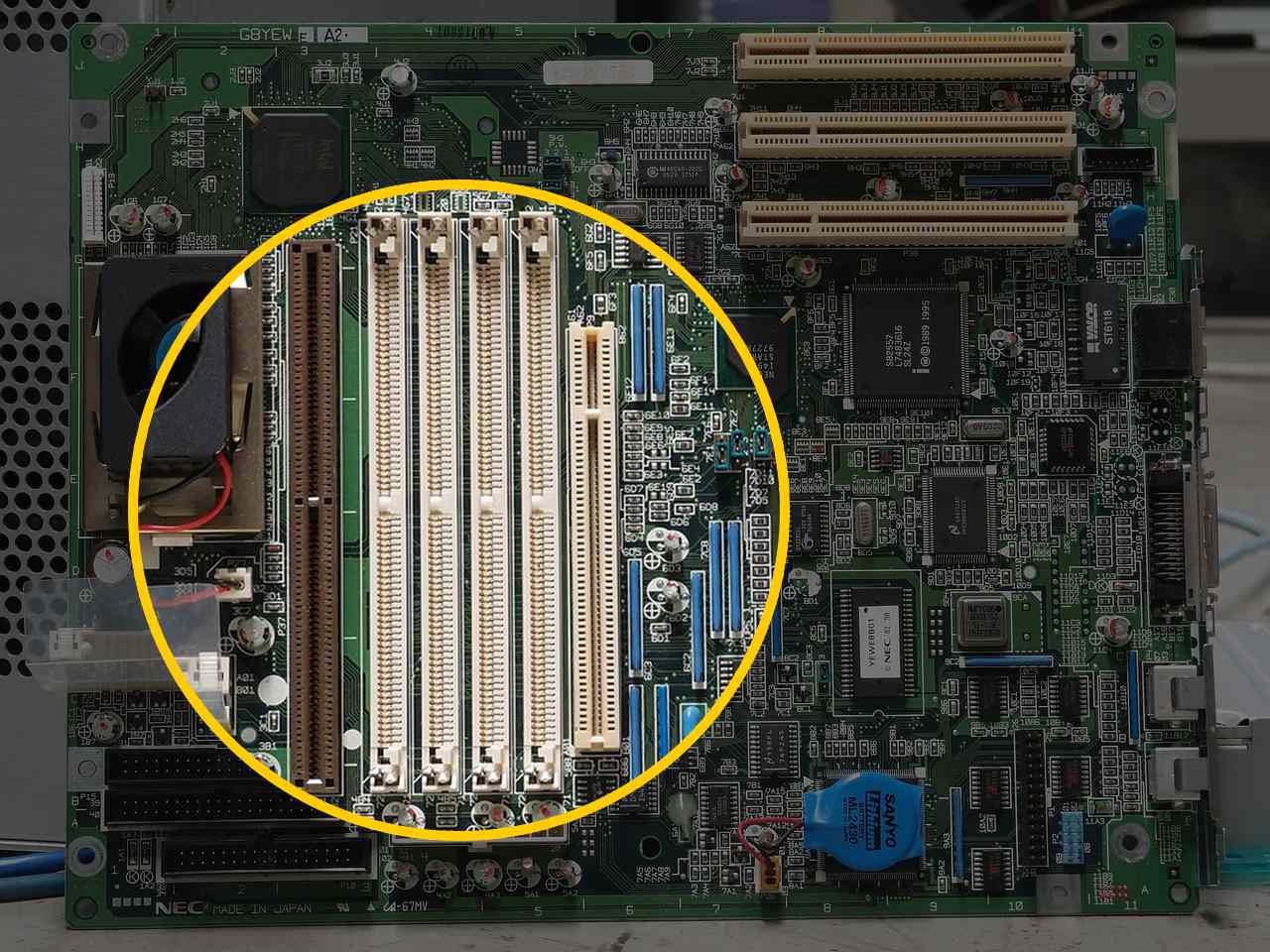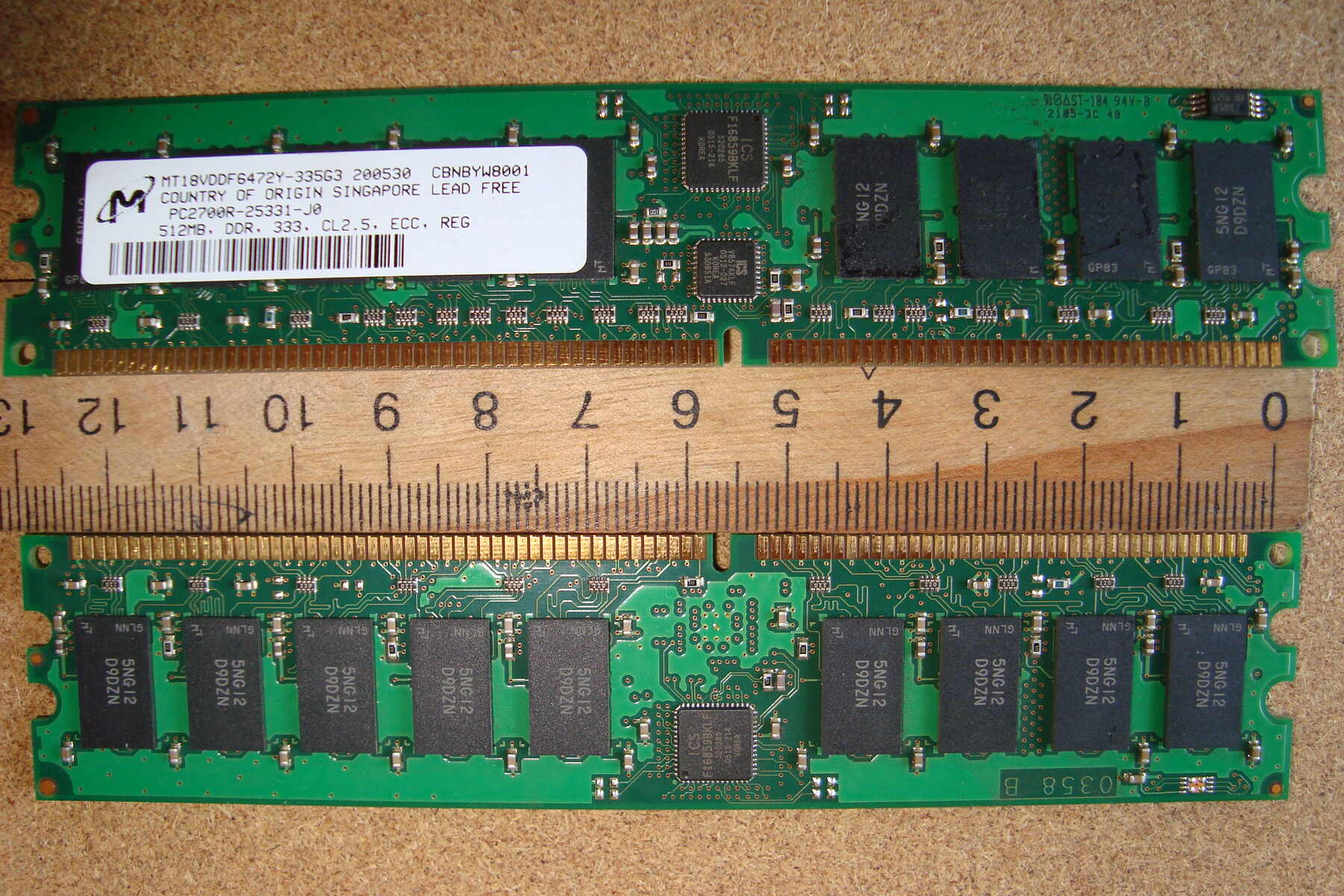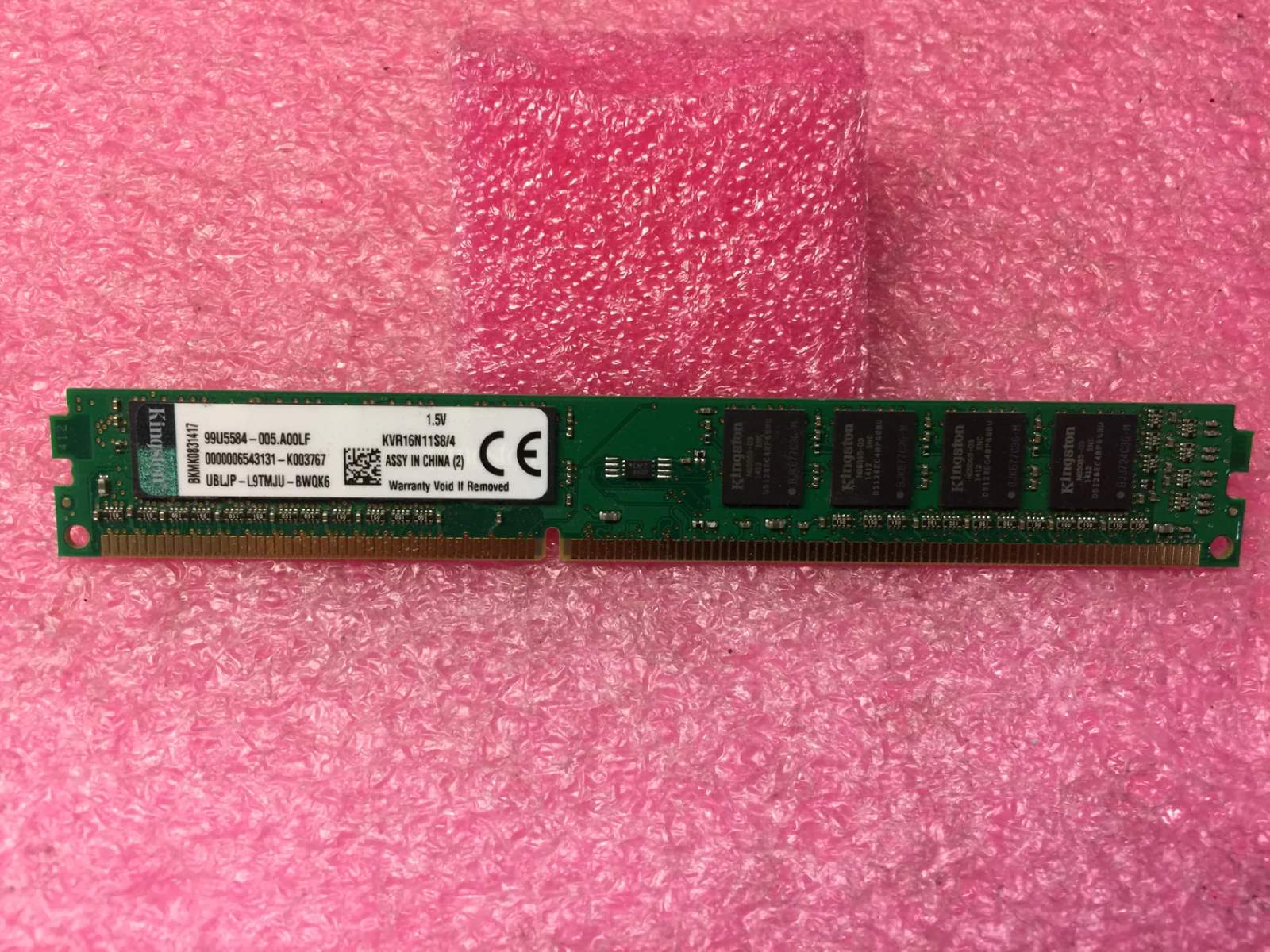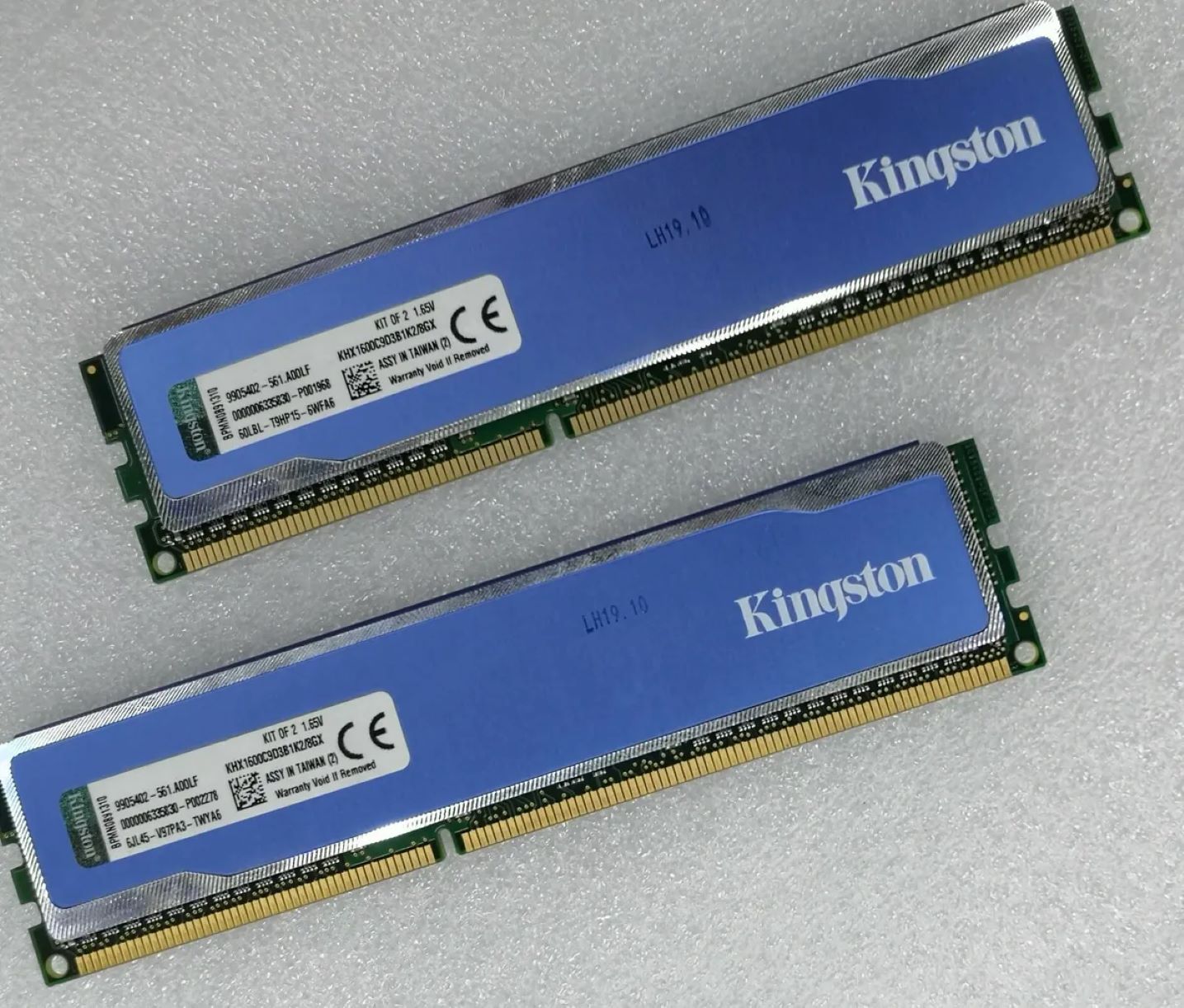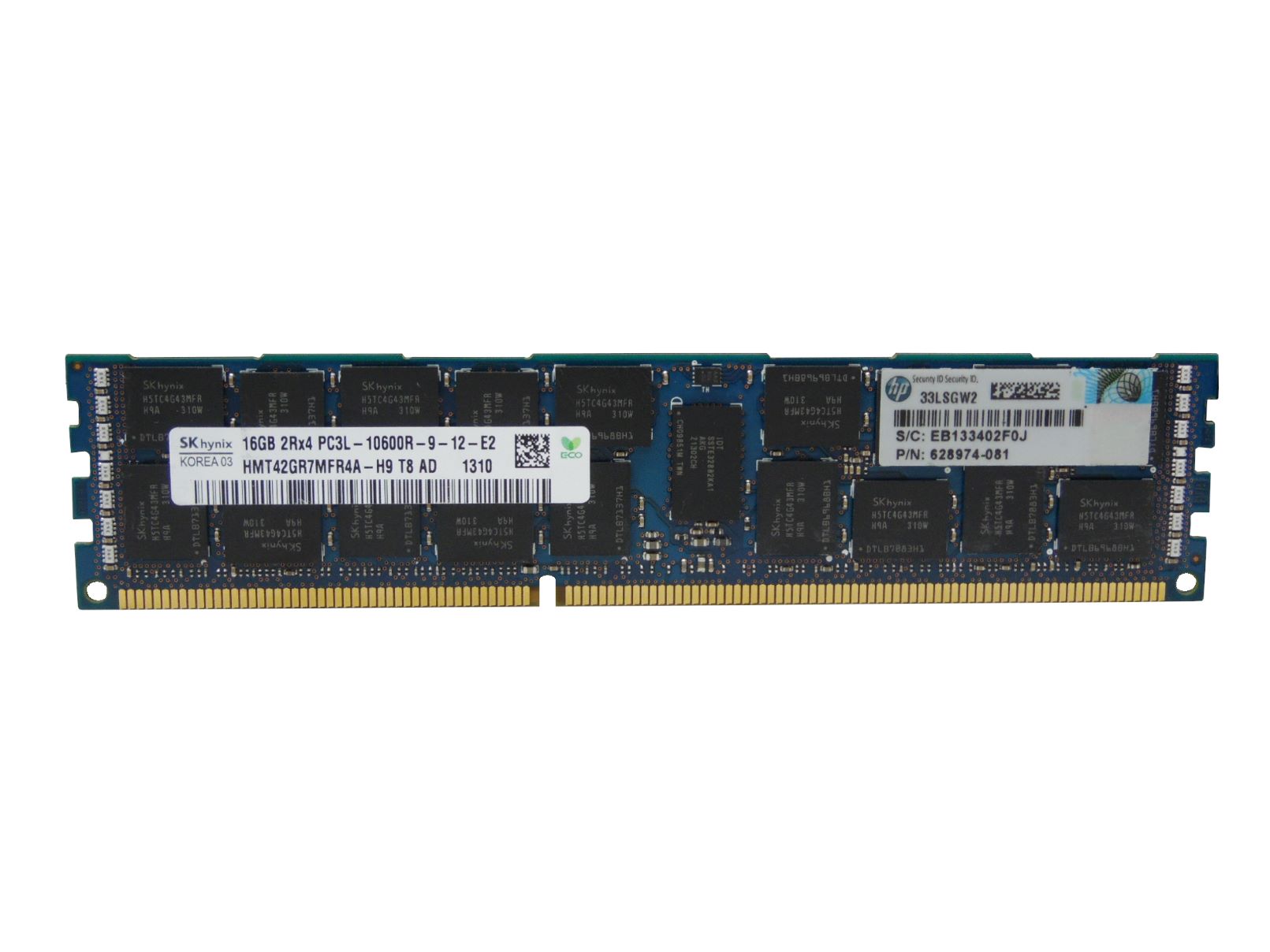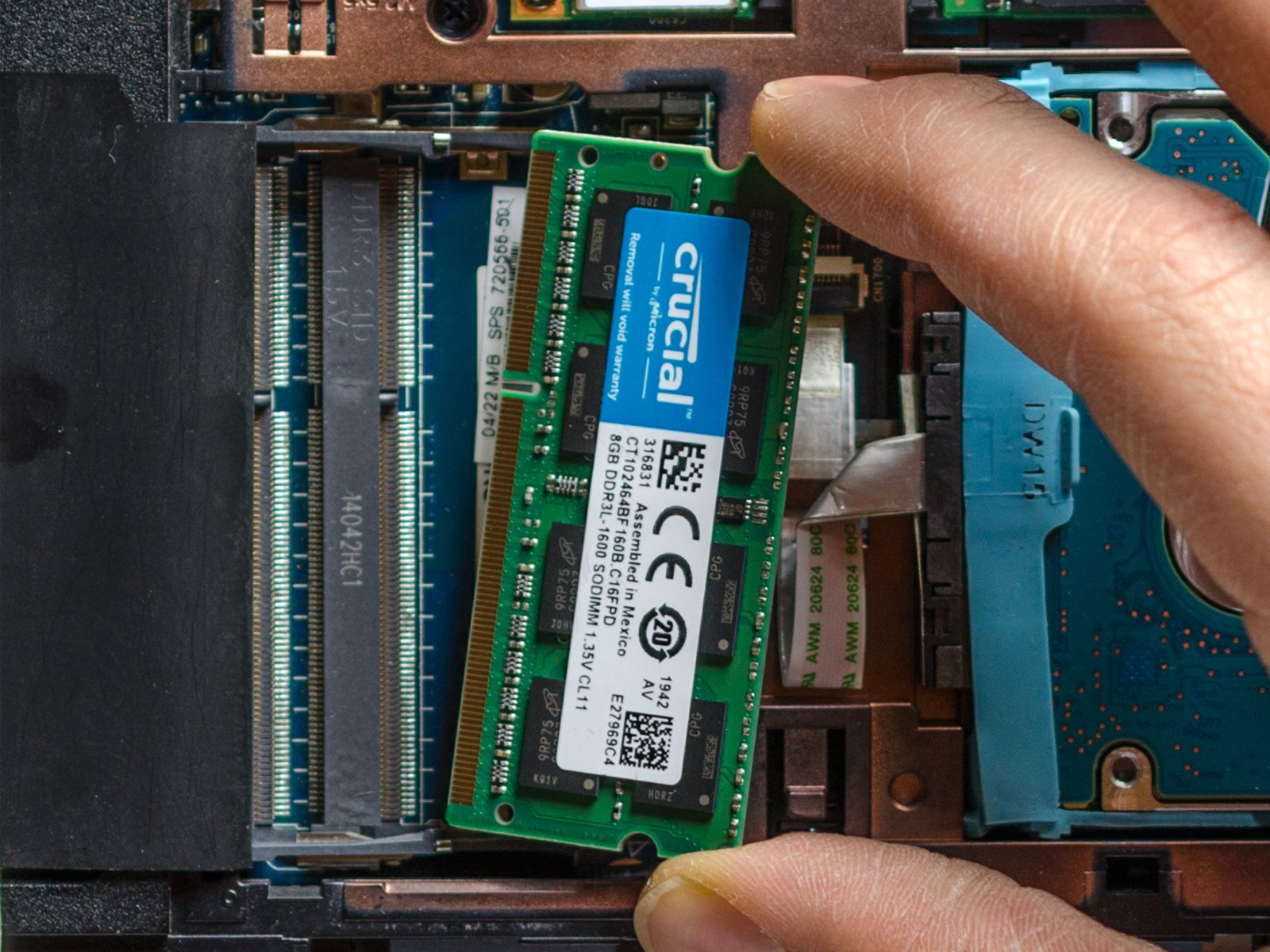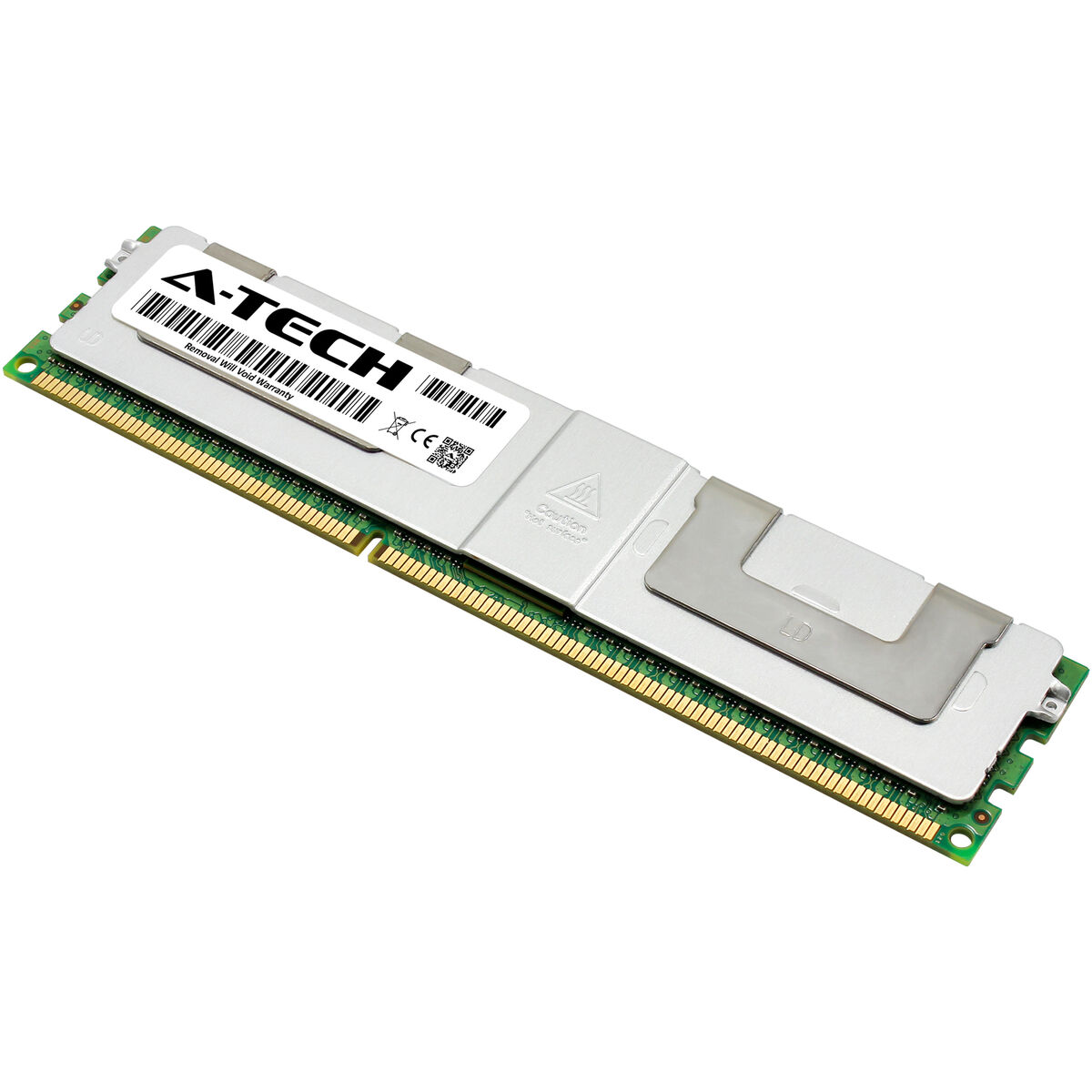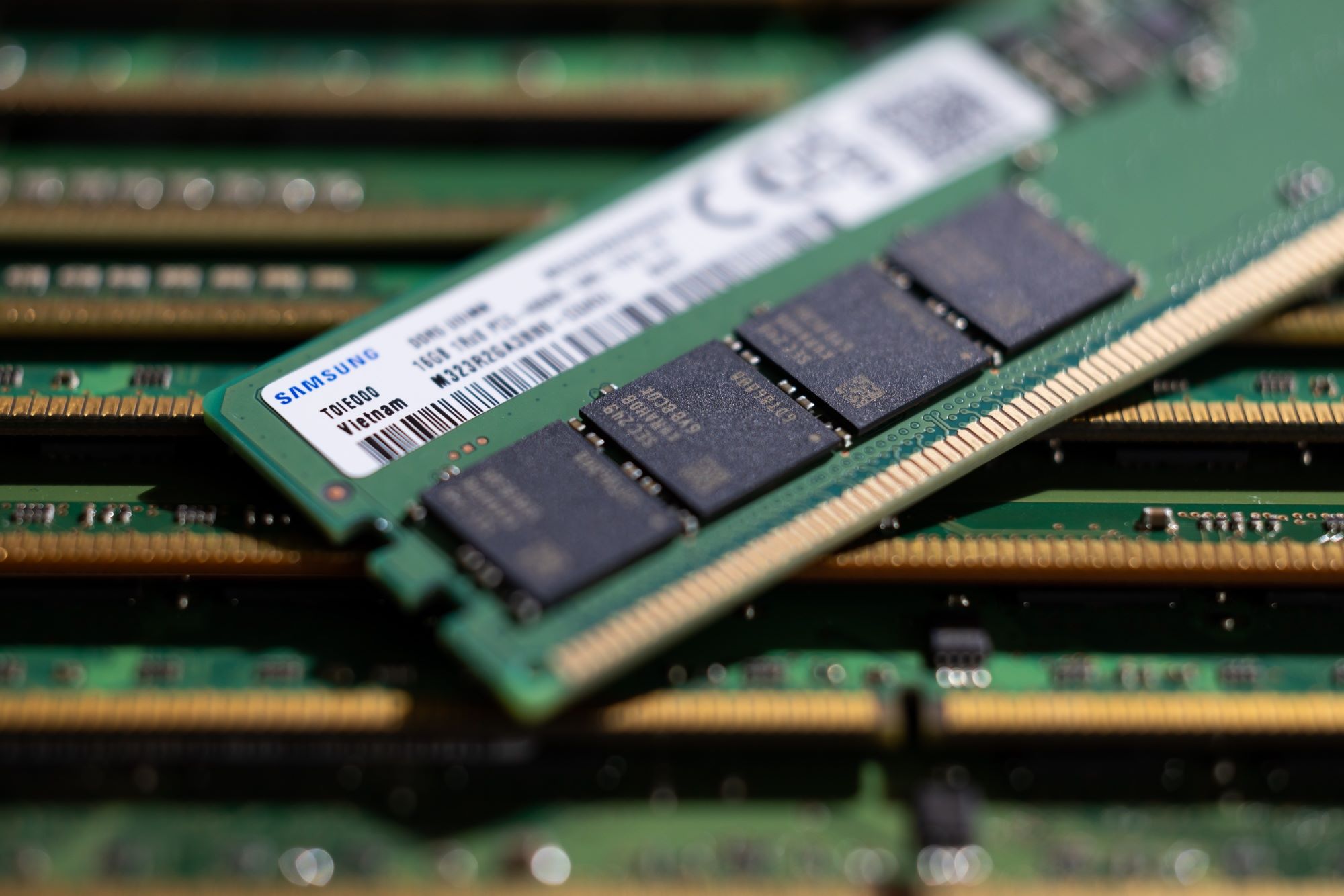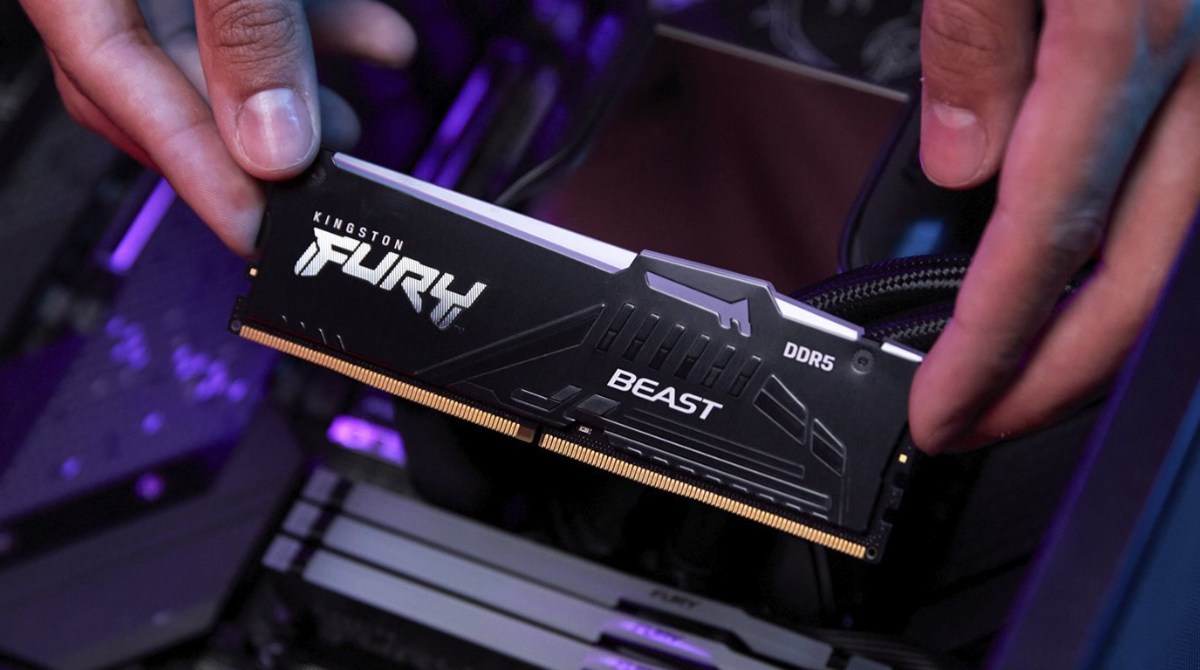Introduction
Welcome to the world of computer hardware! If you’ve ever wondered what makes your computer run smoothly and handle multiple tasks at once, then you’re in the right place. In this article, we’ll dive into the fascinating world of RAM (Random Access Memory) and explore its role in a computer system.
In today’s fast-paced digital world, where we rely heavily on computers for work, entertainment, and communication, it’s essential to understand the components that contribute to their performance. RAM is a crucial component of any computer, and its impact on system performance cannot be overstated.
As you navigate through this article, we’ll take a closer look at what RAM is, how it works, and why it is vital for your computer’s performance. We’ll also explore the difference between RAM and storage, and delve into the factors you should consider when deciding how much RAM to have in your system. Additionally, we’ll discuss the benefits and considerations of upgrading RAM, along with tips for optimizing RAM usage. Finally, we’ll touch on common RAM-related issues and troubleshooting techniques.
Whether you’re a beginner looking to expand your knowledge of computer hardware or an experienced user seeking to optimize your system’s performance, this article will provide you with valuable insights into the world of RAM.
Definition of RAM
RAM, short for Random Access Memory, is a crucial component of a computer system that plays a vital role in its overall performance. It is a form of temporary memory that the computer uses to store data that is actively being accessed by the processor.
Unlike long-term storage devices such as hard drives or solid-state drives (SSDs), RAM provides fast and temporary storage that is directly accessible by the CPU. This allows the processor to quickly retrieve and manipulate data, enabling the computer to perform tasks efficiently and swiftly.
RAM is often compared to a work desk in an office. Just like a desk provides immediate access to important documents and tools needed for ongoing tasks, RAM provides quick access to data that the computer needs to work on in real-time. It acts as a workspace for the processor, allowing it to load and process data at a much faster rate than if it had to constantly retrieve information from long-term storage.
RAM is volatile memory, meaning that its contents are lost when the computer is powered off or restarted. This is different from non-volatile storage devices like hard drives, where data remains intact even when the power is turned off. This temporary nature of RAM allows for quick and dynamic data access, as the computer can rapidly read from and write to this memory.
When you open a program or file, the necessary data is loaded into RAM so that the processor can quickly access it. The larger the amount of RAM in a computer system, the more data it can hold, which allows for smoother multitasking and the handling of memory-intensive tasks. While RAM is crucial for overall system performance, it is important to note that it does not determine the total storage capacity of a computer. For long-term data storage, computers rely on hard drives, SSDs, or other storage devices.
Understanding the role and function of RAM is essential for anyone looking to upgrade their computer or optimize its performance. In the next section, we’ll dive deeper into how RAM works and its importance in a computer system.
How RAM Works
RAM, or Random Access Memory, works by providing the computer with a temporary storage space that the processor can quickly access. It is like the computer’s short-term memory, allowing for efficient and speedy data retrieval and processing.
At a basic level, RAM is made up of many memory cells that are organized into a grid-like structure. Each cell consists of a capacitor and a transistor, which work together to store and represent binary data in the form of 0s and 1s. These cells are organized into modules, commonly known as RAM sticks or memory modules, which are then inserted into the computer’s motherboard.
When you turn on your computer, the operating system and other essential software are loaded into the RAM. This process is known as booting up, and it ensures that the necessary programs are readily available for the processor to access. As you open additional programs or files, more data is loaded into the RAM to facilitate quick access and manipulation.
When the processor needs to read or write data, it sends out specific instructions to the RAM. The RAM then retrieves the required data from its memory cells and sends it back to the processor for processing. The speed at which this data retrieval and transmission occurs is measured in nanoseconds (ns) and is known as the RAM’s access time. Faster RAM modules generally have lower access times, resulting in snappier system performance.
One important characteristic of RAM is its random access nature. This means that the processor can directly access any memory location in the RAM at any given moment, without needing to go through each memory cell sequentially. This random access capability allows for significant improvements in processing speed and multitasking capabilities.
However, it’s important to note that RAM is a volatile form of memory. This means that the data stored within it is lost when the computer loses power or is restarted. To prevent data loss, it is crucial to save important files and documents to longer-term storage devices, such as hard drives or SSDs.
In a nutshell, RAM plays a crucial role in a computer system by providing a temporary storage space where the processor can quickly access and manipulate data. Understanding how RAM works is essential for optimizing system performance and ensuring smooth multitasking capabilities.
Importance of RAM in a Computer
RAM, or Random Access Memory, is an integral component that significantly impacts the overall performance and speed of a computer system. Here are some key reasons why RAM is crucial:
1. Multitasking: RAM allows your computer to handle multiple tasks simultaneously. When you have more RAM, your computer can store more data from different applications in its memory. This enables seamless switching between programs, smoother multitasking, and improved efficiency.
2. Application Performance: RAM directly affects the performance of the applications you use. More RAM allows for faster loading times and smoother operation of resource-intensive software like video editing tools, graphic design applications, and video games. Insufficient RAM can cause lag, freezing, and overall sluggishness.
3. Operating System Performance: The operating system itself requires a certain amount of RAM to run smoothly. With ample RAM, the operating system can efficiently cache data, resulting in faster boot-up times, quicker program launches, and overall snappier performance.
4. Web Browsing and Internet Usage: RAM plays a vital role in web browsing and internet-related activities. It allows for the efficient caching of web pages, reducing load times and enhancing the browsing experience. More RAM also enables smoother streaming of multimedia content and faster downloads.
5. Virtualization and Resource-Intensive Tasks: If you use virtual machines or perform resource-intensive tasks such as 3D rendering, video encoding, or running complex simulations, having ample RAM is crucial. These tasks often require significant amounts of memory, and insufficient RAM can lead to slower performance and longer processing times.
6. Gaming Performance: RAM is essential for gamers, as it directly influences the gaming experience. Games with detailed graphics, high-resolution textures, and rich environments require sufficient RAM for smooth and lag-free gameplay. Insufficient RAM can lead to stuttering, frame rate drops, and longer loading times.
Overall, RAM is an invaluable component that enables faster data access, improves multitasking capabilities, and enhances overall system performance. Investing in sufficient RAM is essential for ensuring a smooth and efficient computing experience.
RAM vs Storage: Understanding the Difference
RAM (Random Access Memory) and storage are two distinct components in a computer system, each serving different purposes. Understanding the difference between these two is essential for optimizing your computer’s performance. Let’s explore the key distinctions:
RAM:
RAM is a form of temporary memory that stores data that is actively being used by the processor. It provides fast and temporary storage that allows the CPU to quickly access and manipulate data. RAM is directly accessible by the processor, enabling swift data retrieval and processing. However, it is volatile, meaning that its contents are lost when the computer is powered off or restarted.
The primary role of RAM is to facilitate multitasking and support the efficient execution of programs. It determines the number of applications and processes your computer can handle simultaneously and affects the overall speed and responsiveness of the system.
Storage:
Storage, on the other hand, refers to long-term data retention. It includes devices such as hard disk drives (HDDs), solid-state drives (SSDs), and external storage solutions. Unlike RAM, storage devices retain data even when the power is turned off.
The main function of storage is to store your files, documents, applications, and the operating system itself. It provides a permanent and non-volatile storage space where data can be accessed and retrieved as needed. Storage devices have larger capacities compared to RAM and are typically used for storing files for long-term use.
While RAM allows for quick access to data, storage devices offer larger capacities for storing vast amounts of information, including the operating system and user files. When the computer needs to access data that is not currently in RAM, it retrieves it from the storage device and loads it into RAM for quicker access by the processor.
In summary, RAM provides temporary and fast storage for data actively used by the processor, enabling speedy execution of programs. Storage devices, on the other hand, offer long-term data retention and larger storage capacities for files and applications.
Both RAM and storage are essential components of a computer system, with each playing a unique role in overall performance. Striking the right balance between sufficient RAM and an appropriate storage solution is crucial for optimizing your computer’s functionality.
How Much RAM Do You Need?
When it comes to determining how much RAM you need for your computer, there are several factors to consider. The amount of RAM required can vary depending on your specific usage requirements, the type of applications you use, and your budget. Let’s explore some considerations to help you determine the optimal amount of RAM for your needs:
1. Operating System Requirements: Start by checking the recommended RAM requirements for your operating system. Different operating systems have different minimum and recommended RAM specifications. Be sure to meet or exceed the recommended requirements for optimal performance.
2. Types of Applications You Use: Consider the types of applications you use on a regular basis. If you mainly use productivity software such as word processors, spreadsheets, and web browsers, 8GB to 16GB of RAM should be sufficient. However, if you run resource-intensive applications like video editing software or virtual machines, you may need 16GB or more for smooth performance.
3. Multitasking Requirements: If you frequently multitask and have multiple applications running simultaneously, you will benefit from having more RAM. This is especially true if you work with large files, have multiple browser tabs open, or use memory-heavy applications. Opting for 16GB or more of RAM can ensure smooth multitasking without performance bottlenecks.
4. Gaming Requirements: If you are a gamer, the amount of RAM you need can vary depending on the games you play. Most modern games recommend or require at least 8GB of RAM. However, for a better gaming experience, especially with graphically demanding games, opting for 16GB or even 32GB of RAM can make a significant difference.
5. Future Upgradability: Consider your future needs and the potential for future upgrades. If you plan to keep your computer for a long time or anticipate using more demanding applications in the future, investing in more RAM upfront can help future-proof your system and avoid the need for immediate upgrades down the line.
6. Budget: RAM prices can vary based on capacity and speed. Consider your budget and weigh it against your performance needs. It’s important to find a balance between performance and affordability. If you’re on a tight budget, prioritize getting the recommended minimum RAM requirement for your specific usage needs and consider upgrading later if necessary.
Ultimately, the amount of RAM you need is subjective and depends on your specific requirements. While 8GB is the minimum recommended for most users, 16GB is becoming the standard for smoother performance. If you use resource-intensive applications or are an avid gamer, 32GB or more may be beneficial. Assess your usage, consider future needs, and align your budget to determine the optimal amount of RAM for your computer system.
Upgrading RAM: Benefits and Considerations
Upgrading the RAM (Random Access Memory) in your computer can have several benefits and can significantly improve the overall performance of your system. Here are some key benefits and considerations when it comes to upgrading your RAM:
1. Improved Performance: One of the primary benefits of upgrading your RAM is improved system performance. With more RAM, your computer can handle larger amounts of data, allowing for smoother multitasking, faster program launches, and quicker data access. This is especially noticeable when running memory-intensive applications or working with large files.
2. Enhanced Multitasking: Upgrading your RAM can enhance your ability to multitask efficiently. With more RAM, you can have several applications running simultaneously without experiencing a slowdown in performance. This is particularly useful if you frequently switch between multiple programs, have several browser tabs open, or utilize resource-heavy software.
3. Better Gaming Experience: Gaming enthusiasts can benefit greatly from increased RAM. Games with detailed graphics, large game worlds, and demanding textures require ample memory to load and run smoothly. More RAM allows for faster loading times, reduced lag, and an overall improved gaming experience.
4. Future-Proofing: Investing in more RAM now can help future-proof your system. As software and applications become more demanding over time, having more RAM ensures that your computer can handle the increased requirements. This can extend the lifespan of your system without the need for immediate upgrades.
5. Compatibility: When considering a RAM upgrade, it’s important to ensure compatibility with your system. Check your motherboard’s specifications and consult the manufacturer’s guidelines to determine the maximum supported RAM capacity and the type of RAM modules that are compatible. Different systems have different limitations, so it’s crucial to choose RAM modules that match your system’s requirements.
6. Cost Considerations: The cost of upgrading RAM can vary depending on the capacity and speed you desire. Compare prices from reputable vendors and consider the performance boost you’ll gain from the upgrade. Assess your usage needs and budget, and choose RAM modules that provide the best balance of performance and affordability.
7. Existing System Limitations: Keep in mind that upgrading RAM alone may not solve all performance issues. If your computer has other hardware limitations, such as an outdated processor or insufficient storage, upgrading RAM might not provide a significant improvement. It’s important to assess your entire system and consider the overall balance of your hardware components.
In summary, upgrading your RAM can provide numerous benefits, including improved performance, enhanced multitasking capabilities, and a better overall computing experience. Consider compatibility, cost, and existing hardware limitations when deciding to upgrade your RAM, and ensure that the upgrade aligns with your specific usage needs and budget.
Tips for Optimizing RAM Usage
Optimizing your RAM (Random Access Memory) usage can help maximize the performance of your computer system, ensuring efficient utilization of available memory. Here are some helpful tips to optimize your RAM usage:
1. Close Unnecessary Programs: Close any programs or processes running in the background that you’re not actively using. This frees up RAM for the applications you actually need, leading to improved performance and smoother multitasking.
2. Limit Startup Programs: Reduce the number of programs that launch automatically when you start your computer. Some applications configure themselves to start automatically, consuming valuable RAM. Disable unnecessary startup programs to free up memory for other tasks.
3. Use Lightweight Alternatives: Opt for lightweight applications or browser extensions that consume less RAM. For example, web browsers with fewer add-ons and extensions tend to use less memory. Choose software that is optimized for performance and uses resources efficiently.
4. Manage Browser Tabs and Extensions: Limit the number of open tabs in your web browser, as each tab consumes memory. Additionally, review and disable unnecessary browser extensions that may be running in the background and using up valuable resources.
5. Update Software and Drivers: Keep your operating system, applications, and device drivers up to date. Software updates often include performance improvements and bug fixes that can help optimize resource usage, including RAM utilization.
6. Adjust Visual Effects: Customizing your visual effects settings can help reduce the demand on RAM. Disable or reduce unnecessary visual effects such as animations, transparency, and shadows in your operating system settings to free up memory for other critical tasks.
7. Increase Virtual Memory: Virtual memory is a feature that allows your computer to use hard disk space as additional memory when the RAM is fully utilized. Increasing the size of virtual memory can help compensate for limited physical RAM, but keep in mind that it may result in slightly slower performance.
8. Perform Regular Maintenance: Regularly perform system maintenance tasks such as disk cleanup and defragmentation to optimize your system’s overall performance. Removing temporary files, cleaning up disk space, and organizing fragmented data can free up resources, including RAM.
9. Upgrade RAM: If you consistently find your computer running out of memory or struggling to handle your workload, consider upgrading your RAM capacity. Additional RAM allows for smoother multitasking and better performance, especially when working with memory-intensive applications.
10. Restart Your Computer: When all else fails, a simple restart can help refresh your system’s memory and improve performance. Restarting your computer clears temporary files and flushes out any memory leaks that may be causing performance issues.
By following these tips and best practices, you can optimize your RAM usage and ensure that your computer’s memory is utilized efficiently, resulting in improved system performance and a smoother user experience.
Common RAM-related Issues and Troubleshooting
RAM (Random Access Memory) is a critical component of a computer system, and like any other hardware, it can encounter issues from time to time. Understanding common RAM-related issues and how to troubleshoot them can help you identify and resolve problems efficiently. Here are some common RAM issues and troubleshooting steps:
1. Random System Crashes or Freezes: If your computer freezes or crashes randomly, it could be due to faulty RAM. Perform a memory diagnostic test using built-in utilities like Windows Memory Diagnostic or third-party software like Memtest86. If errors are detected, consider replacing the faulty RAM module.
2. Blue Screen of Death (BSOD) Errors: Blue screen errors are often caused by RAM-related issues. Restart your computer and check for error messages on the blue screen. If you notice specific error codes related to memory, it could indicate faulty RAM. Try reseating the RAM modules or replacing them to resolve the issue.
3. System Slowdown or Lag: If your computer is experiencing sluggish performance or delays in executing tasks, insufficient RAM or incompatible RAM modules could be the cause. Check your system’s RAM usage in the task manager or resource monitor. If usage is consistently high even with minimal applications running, consider upgrading your RAM capacity or ensuring compatibility with your system’s specifications.
4. Memory Leaks: Memory leaks occur when an application fails to release memory it no longer needs. This can lead to a gradual increase in RAM usage over time. To identify and resolve memory leaks, monitor RAM usage using task manager or resource monitor and identify the specific application causing the issue. Contact the software vendor for a potential fix or consider replacing the problematic application.
5. Incompatibility with Motherboard or Operating System: RAM modules may not be compatible with your motherboard or operating system, resulting in system instability. Verify the compatibility of your RAM modules with your system’s specifications, including chipset compatibility, memory type, and maximum supported capacity. Consult your motherboard or system manufacturer’s documentation or website for recommended RAM configurations.
6. Overheating: High operating temperatures can adversely affect RAM performance. Ensure that your computer is adequately cooled to prevent overheating. Clean the computer’s cooling fans, ensure proper ventilation, and consider adding additional cooling solutions if necessary.
7. System Boot Issues: If your computer fails to boot or encounters boot loops, faulty RAM could be the culprit. Try reseating the RAM modules, ensuring they are properly inserted into the motherboard’s slots. If the issue persists, test each RAM module individually to identify the faulty module and replace it.
8. Uncorrectable Errors: If your computer displays uncorrectable errors during RAM testing or encounters frequent system crashes, it may indicate a serious RAM issue. In such cases, consult a professional or contact the manufacturer for further assistance and potential replacement.
Remember to handle RAM modules with care, avoid static electricity, and follow proper installation procedures to prevent damage. If you are unsure about troubleshooting or resolving RAM-related issues, seek guidance from a computer technician or contact the manufacturer’s support for assistance.
Conclusion
RAM (Random Access Memory) is a vital component in any computer system, playing a critical role in overall performance and efficiency. Its ability to provide fast and temporary storage allows the processor to quickly access and manipulate data, facilitating multitasking, improving application performance, and enhancing the overall user experience.
In this article, we have explored various aspects of RAM, including its definition, how it works, its importance in a computer, and the difference between RAM and storage. We discussed considerations for determining the optimal amount of RAM and provided tips for optimizing its usage. Additionally, we covered the benefits and considerations of upgrading RAM, as well as common RAM-related issues and troubleshooting steps.
By understanding the function and significance of RAM, computer users can make informed decisions about their system’s memory requirements. Whether you are a casual user, a professional in need of robust multitasking capabilities, or a gamer seeking optimal performance, RAM plays a crucial role in meeting your computing needs.
Remember to consider factors such as operating system requirements, application usage, and budget when determining how much RAM to have in your system. Regular maintenance, software updates, and proper cooling can help optimize RAM usage and prevent common issues.
Ultimately, RAM serves as the bridge between the processor and data, facilitating smooth and efficient data access. By investing in sufficient RAM and taking steps to optimize its usage, you can unlock the full potential of your computer system and ensure seamless multitasking, faster application performance, and a more enjoyable computing experience.







